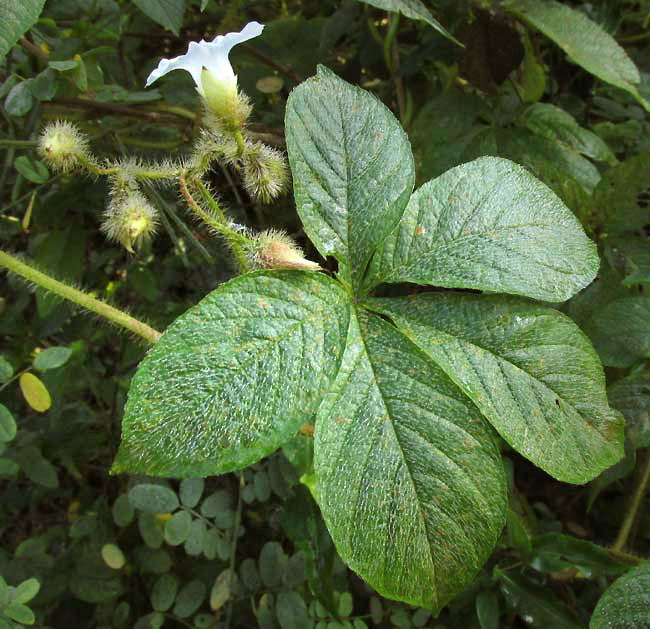Excerpts from Jim Conrad's
Naturalist Newsletter
from the November 8, 2015 Newsletter issued from Hacienda Chichen Resort beside Chichén Itzá Ruins, central Yucatán, MÉXICO
HAIRY WOODROSE

Often in the Newsletter I've expressed astonishment at the many different kinds of morning glories found in this area. Morning glories are viny members of the Morning Glory or Sweet Potato Family, the Convolvulaceae. Since the Maya tend to regularly chop down and burn the forest, there are plenty of standing dead trees and short trees and bushes perfect for morning glories to climb over, sometimes forming large areas where everything is smothered beneath them.
Happily, I continue to find new morning glory species. For example, this week the exceptionally hairy one turned up shown above. Not only the abundant long, stiff and somewhat orangish hairs but also the compound leaves with leaflets arising from the petiole tip (digitately compound) make this species distinctive and easy to identify. The flowers however, are structured like those of a lot of morning glories, as shown below in the broken-apart blossom:

This is the Hairy Woodrose, MERREMIA AEGYPTIA*, despite the Egyptian part of the name a native of Mexico and tropical America in general, but invading much of the world's tropics. The genus Merremia is a lesser known genus, set apart from better known genera largely because of its pollen grains. Unlike the big morning glory genus Ipomoea, which this plant looks a lot like, Merremia flowers produce pollen grains without spines. Also, anthers in Merremia flowers tend to twist, though in our blossoms they were fairly straight.
This morning glory's twining stems are especially tough, in fact in some African countries being used to tie together poles in house frames. In certain parts of Africa the dried leaves are used as a dressing for burns. The plants must contain some kind of powerfully active compound, because it's known to cause diarrhea in small stock when large quantities were eaten.